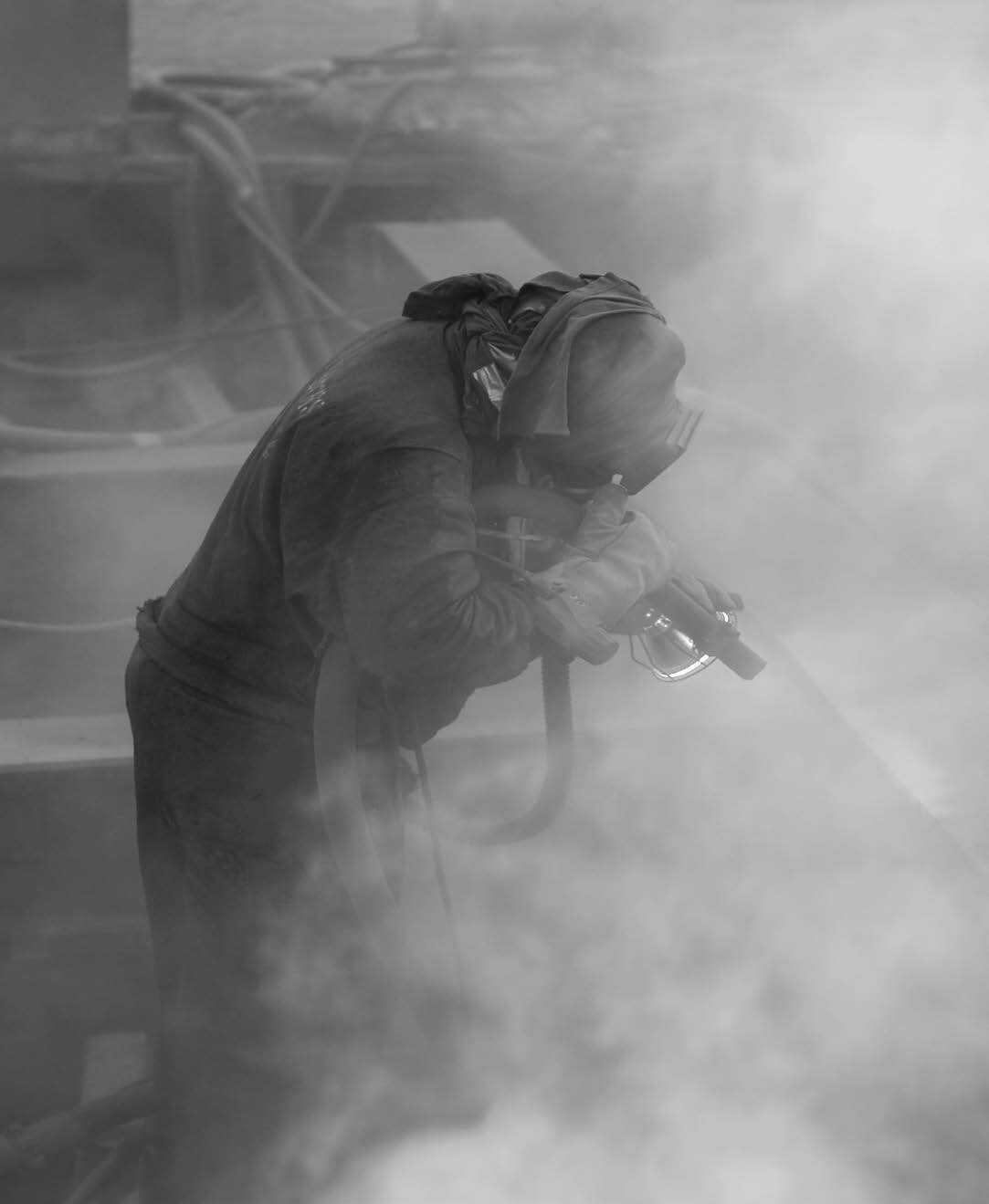
Surface Preparation of Ductile Iron Pipe & Fittings
Inthe water and wastewater industries, there is confusion about which of the ferrous metal surface preparation standards to reference for ductile iron pipe
- High Performance Coatings
The foundation of any effective high-performance coating application is surface preparation. The use of premium quality materials in your coating systems is paramount to sustainability and maximizing the value of an asset, but surface preparation specification references are equally integral to the success of any coating system. Poor surface preparation will inevitably lead to failure, even when the highest quality coating products are used. Most professionals in the coating industry are extremely familiar with surface preparation standards for various substrates that are produced by organizations such as SSPC, NACE, ASTM, ICRI, and others. By and large, these well-known reference standards are extremely thorough, provide sufficient guidance for the coating applicator, and can be incorporated into a coating specification as a reference standard with good result.
Relative to the water and wastewater industries, there is often confusion about which of the typical ferrous metal surface preparation standards to reference for ductile iron pipe, fittings, and fabrications. While it is true that ductile iron is a ferrous metal, there are differences in the metallurgical properties of ductile iron which can lead to damage when steel surface preparation standards are applied. These standards are often specified by reference incorrectly, perhaps due to the fact that many in the industry are unaware that there is a consensus surface preparation reference standard which is specific to ductile iron substrates.
The relevant surface preparation standard for ductile iron is a publication of the National Association of Pipe Fabricators (NAPF). The title is a mouthful, but clearly indicates the scope of the document. It is “NAPF 500-03, Surface Preparation Standard for Ductile Iron Pipe and Fittings in Exposed Locations Receiving Special External Coatings and/or Special Internal Linings”. As with many such reference documents, NAPF 500-03 provides a comprehensive set of guidelines covering a wide range of application types. While the document is a great reference for any ductile iron coating specification, it is also important to understand its structure in order to include effective references for your particular application.
NAPF 500-03 includes five categories of surface preparation, including Solvent Cleaning, Hand Tool Cleaning, Abrasive Blast Cleaning for Ductile Iron Pipe, and Abrasive Blast Cleaning for Ductile Iron Fittings. Each of these five segments outlines its scope, related definitions, surface preparation before and after the specified preparation type, methods to achieve the desired result, inspection, and safety. Two of the five standards are specific to abrasive blasting preparation methods, and they both offer guidance to evaluate the appearance of the prepared substrate and the type of abrasive to be used in addition to the above. The standard also provides notations that will aide in selecting the appropriate surface preparation type to specify based on the intended service conditions, type of coating system to be applied, and whether there are previously applied coatings, among other factors.
There is much to be understood about the metallurgy, manufacturing, and processing of ductile iron that make it distinct from carbon steel. For example, steel abrasive blasting standards typically require removal mill scale and rust to a defined level, removal of contaminants, and an anchor profile. Conversely, ductile iron can be effectively cleaned using a lower degree of abrasive blast preparation and will often already have an anchor profile that is sufficient simply by virtue of the manufacturing process. Similarly, steel abrasive blasting standards typically require an anchor profile range and make reference to color for the purposes of evaluating the completeness of the preparation processes. Since the metallurgy of ductile iron produces innate texture and color properties that are altogether different from those of carbon steel, it is not possible to apply those portions of a steel preparation standard to ductile iron substrates. The Foreword of NAPF 500-03 offers explanations of these and several other driving factors for its creation and applicability to specifications that include coating systems for ductile iron substrates.
Tnemec Company manufactures many high-performance coating and lining materials which can be specified over appropriate NAPF 500-03 surface preparation methods. These include MIO Zinc primers (Series 1 Omnithane), epoxy intermediate coats (Series N69 Hi-Build Epoxoline II), and aliphatic acrylic polyurethane finish coats (Series 1095 Endura-Shield) for use on the exterior of ductile iron pipe and fittings. Additionally, Tnemec Company produces interior lining products for potable water (Series 22 & Series FC22 Epoxoline) and wastewater (Series 431 Perma-Shield PL) transmission applications. Each of these products has a well-documented history of successful performance in the intended service, with proper surface preparation as the underpinning element to the efficacy of each application.
Contact us for assistance with selecting the appropriate NAPF 500-03 surface preparation reference for your specifications.
Check out these additional resources on wastewater and water treatment coatings
Severe Wastewater Testing for Coatings
Engineers- Specifying High Performance Coatings
Coatings for Wastewater Facilities
Don't miss these wastewater and water treatment coating project profiles
Howard Berry Water Treatment Plant
Scottsdale Groundwater Treatment Facility

What is NSF / ANSI / CAN 600?
NSF/ANSI/CAN Standard 61 with the NSF 600...

No Need To Fear NSF-600!
Tnemec Company is well-prepared for the changes...

Choosing Surface Preparation Standards
The efficacy of any coating system begins with...